I always more-or-less supposed there were tons of culture-related events and culture thingies to do in Rosario at any given time, but then the propaganda machine of the Municipal Culture Secretariat is well-oiled and sometimes they do blow things out of proportion. However, this is not the case right now.
You'll remember the vernissage I attended last Tuesday — well, that exhibition was held in the very lobby of the seat of the Culture Secretariat, in Rosario Norte Station. (On a side note, I asked my artist friend how she'd managed to get that space. She said she had no idea; it was a deal with her university. And I was already fantasizing about a photo exhibition there...)
Then last Friday I went to see this display of old and new photos, drawings and blueprints of buildings by Lluís Domènech i Montaner. I had no idea who he was, but then I read that he was a pioneer of Catalan Art Nouveau (a.k.a. Modernisme) on par with Antoni Gaudí, so I went to the Parque España to check out the exhibition. Domènech designed buildings mostly in Barcelona, but I knew the style because other Catalan architects worked here in Argentina and particularly in Rosario (see my post with the picture of the Palacio Cabanellas).
Very impressive, enough for 45 minutes of admiration, and it only cost me one peso. I took as many pictures as I could, mostly not very good (pictures of pictures, under museum-type lighting, come out usually rather bad), but enough to document it. I don't know if it was allowed to take them, but nobody protested.
Then on Saturday I was scanning the cultural schedule again, and I found a Japan-themed event at the Museo Estévez, including a display of Japanese art pieces and ornaments, a short lecture on Japan's history, and kamishibai (paper theatre). I decided to check it out as well, but I made the mistake of taking a detour to enjoy the sunny view along the river (camera in hand, of course). It turned out that the view was extremely rewarding and I arrived at the museum when the lecture had already started, and after all the tickets for the kamishibai were reserved. It was all free of charge, but the space was limited, so I was told to come back for another show later. I couldn't do that, but I'm going to try it tonight if I can.
 The lecture was fine enough — a brief surview of the relations between Japan and the West, showing how the myth of an enclosed, self-sufficient, almost xenophobic "millenary" culture is just a myth, as many of the things we associate distinctly with Japan were imported or adapted from the Portuguese, the Spaniards, the Dutch, the British or the Americans. The lecturer wandered into another kind of myth herself a couple of times, unnecessarily, for example speaking of the "unconfirmed" etymology of arigato from Portuguese obrigado, which has long been known to be absolutely bogus, and also relating a supposed graphical similarity between the Japanese kanji for "snow" and "blood" and samurai's concepts of purity and death. Maybe she meant "white" and "blood", which have somewhat similar characters, but then why not "white" and "red"?
The lecture was fine enough — a brief surview of the relations between Japan and the West, showing how the myth of an enclosed, self-sufficient, almost xenophobic "millenary" culture is just a myth, as many of the things we associate distinctly with Japan were imported or adapted from the Portuguese, the Spaniards, the Dutch, the British or the Americans. The lecturer wandered into another kind of myth herself a couple of times, unnecessarily, for example speaking of the "unconfirmed" etymology of arigato from Portuguese obrigado, which has long been known to be absolutely bogus, and also relating a supposed graphical similarity between the Japanese kanji for "snow" and "blood" and samurai's concepts of purity and death. Maybe she meant "white" and "blood", which have somewhat similar characters, but then why not "white" and "red"?Walking to and from the museum, I also noticed a lot of tourists. And I mean a lot. The riverside parks and the Flag Memorial were packed, and adding to the usual locals with mate and thermos and kids and dogs you couldn't stop noticing a large number of people with curious looks, camera in hand, taking pictures of themselves in front of absolutely unremarkable spots, or map in hand wandering the streets.
I found a young couple from some place in Greater Buenos Aires who actually asked me, not how they could get to a certain place, but where they could go, because they were not sure which direction to take. The girl seemed not to know that Rosario had a river, or that it was a large city, and somehow they'd both been able to walk down Córdoba St. without asking for (or finding by themselves) the 70-meter-tall Flag Memorial at the end of it. I also found a couple from Bánfield (Buenos Aires) who asked me to take a picture of them, and commented that Rosario's very nice but has almost no touristic infrastructure. I took another picture of a middle-aged couple from Córdoba. And on my way back I had to explain to two elderly ladies (one of them with a city map she was holding upside down) how to get back to the Bus Terminal.
The weekend is just half over, so there's still much to do...

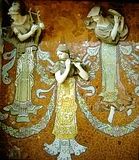
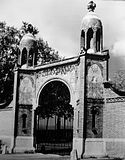

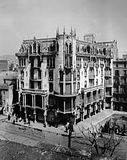
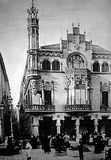

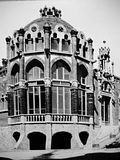
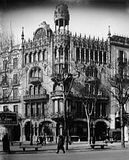
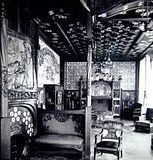












One of our Japanese friends (and sushi chef) was explaining to us once that the Portuguese had introduced deep-frying, including tempura, into Japan. There’s nothing better on a cold winter's day than a plate of kakiage (かきあげ) straight from the deep fryer. It's a style of cooking that I would never have associated with anywhere but Asia had I not been told.
ReplyDeleteJohn
I went to the Domenich i Montaner exhibit in BA when it was at the CC Borges. "Pesimo" best describes it for me. First, there was no original material... all the diagrams & blueprints were nothing more than supersized photos. Second, no objects (tilework, metalwork, etc) were displayed. Third, anyone who knows Argentine architecture (ie, the curators of the exhibit) should have made a tie-in with the fantastic Argie architect Julián García Núñez... D i M was his prof. I might not have been so ticked off had I paid one peso like you, but the CC Borges was charging seven. It's good that D i M's work is getting the recognition it deserves, but it could have been much better presented... probably why I didn't post about it :)
ReplyDelete